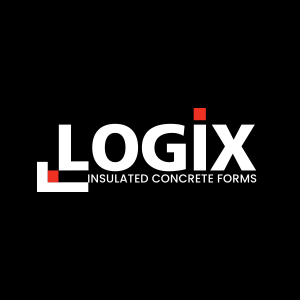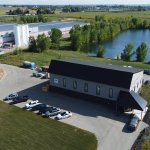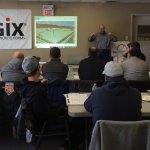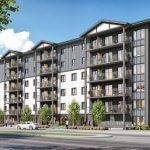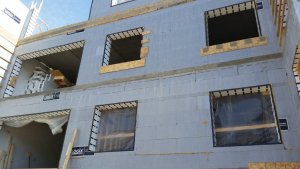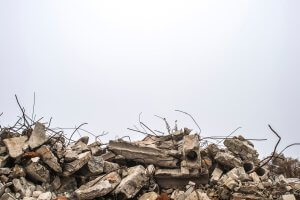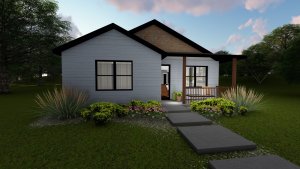We’ve previously discussed the complexities of cold weather ICF concrete pouring in this blog.
Today we discuss hot weather concreting.
Hot weather causes the mix to set faster than it usually would, and this can impair the quality of the concrete. Luckily, there are several ways you can mitigate the effects of hot ambient temperatures on concrete, before and during the pour.
In our post below, we’ll explain what issues excessively hot weather brings on your pour days and the steps you can take to protect your concrete from excessive heat.
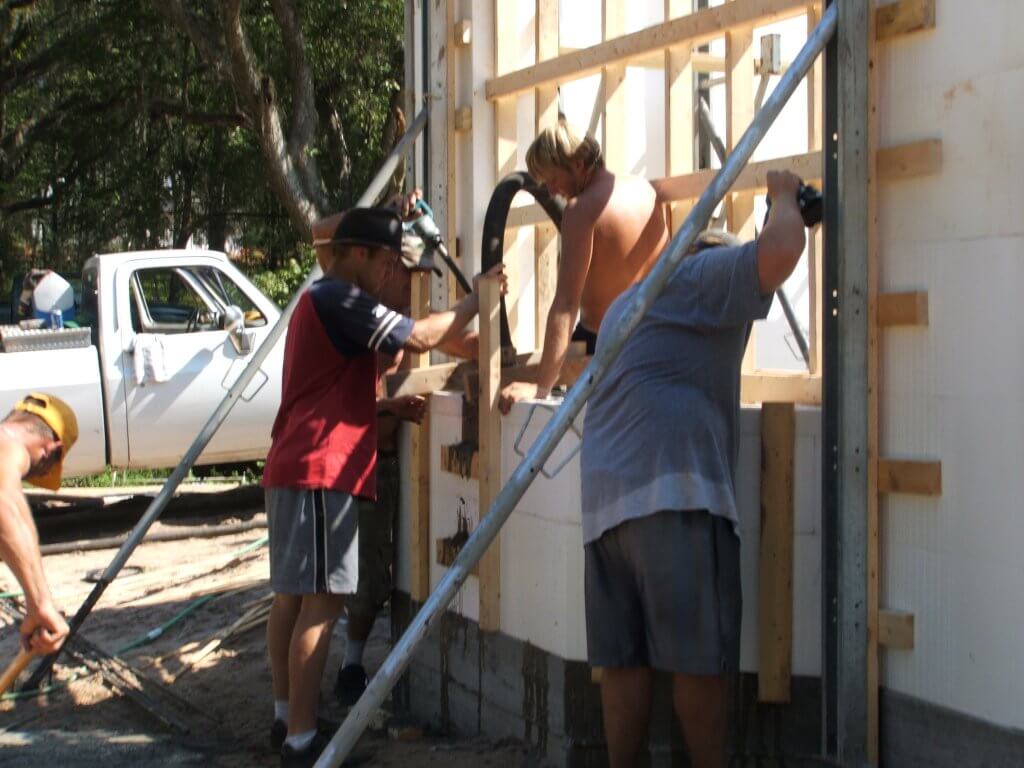
What Are the Issues With Hot Weather Concreting?
The main issue with hot weather concreting is that high ambient temperatures during a pour speed up the setting process, thus negatively affecting the concrete cure.
As the cement hydrates, the concrete sets, and hot temperatures can over accelerate moisture loss and shorten the cement hydration time frame in freshly poured concrete.
If the cement isn’t given sufficient time to hydrate, it will not be able to form a strong bond around the aggregate and the cured concrete will end up with a lower compressive strength.
Another issue with the concrete setting too quickly in hot weather is that it can allow cold joints to occur during the pour. A cold joint happens when one portion of the concrete cures faster than the next, and the two layers are unable to intermix and form a strong, congruous mass.
For the reasons above, ambient temperatures of over 80°F (especially in low humidity) mean you need to take some precautions before and during your concrete pour.
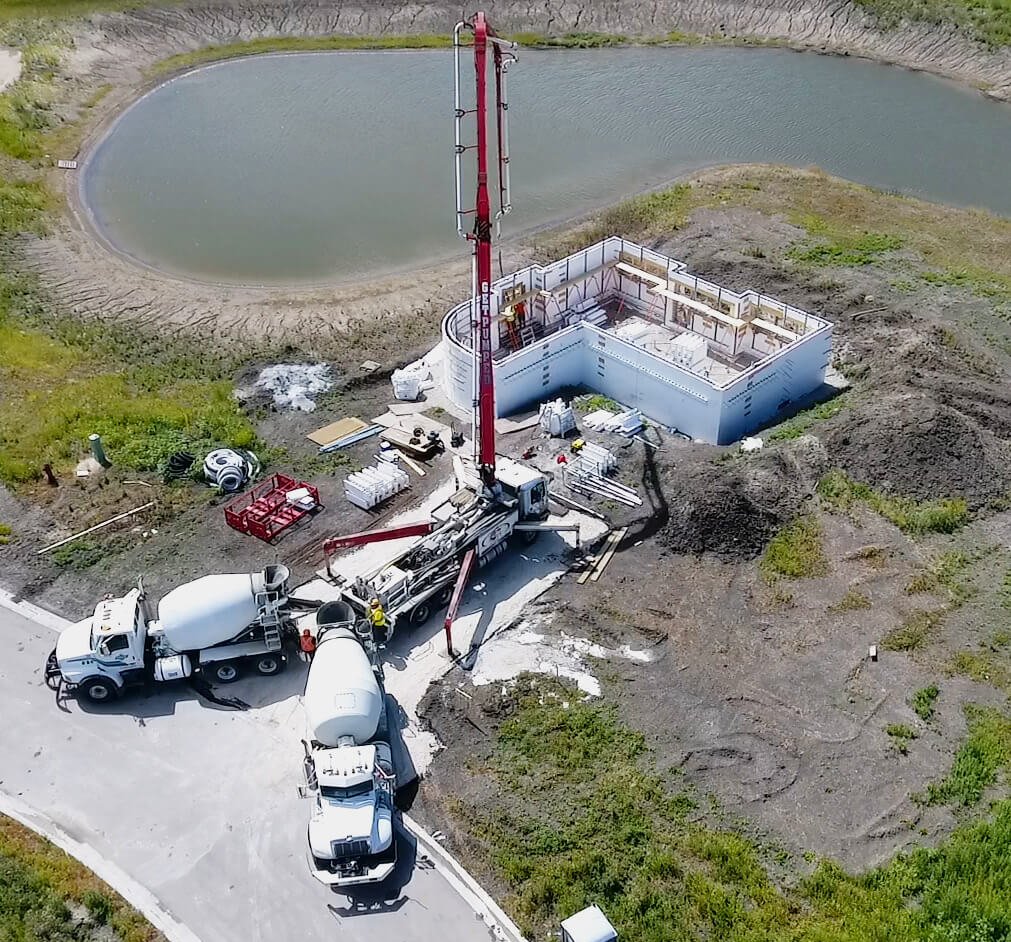
Hot Weather Concreting Tips: Before the Concrete Arrives
Below are a few possible tips to consider when ordering the concrete mix from the plant on hot, dry days.
- Ask for ice in the mix: Some concrete producers add ice to the concrete mix to cool down the mixture and decelerate the setting time. This strategy may help slow the rate of cement hydration to reasonable levels on particularly hot days.
- Ask for admixtures to slow the set time: Some admixtures can prolong the concrete setting time, thus balancing out the accelerating effect of ambient heat.
- Ask for the concrete to show up quickly on site: On hot days, you want the concrete to show up right when you need it, without delays. Firstly, that’s because you don’t want it sitting in the truck for too long. Secondly, you want the pour to happen on time, as planned, and delays with delivery may prolong the process for you.
Of course, once the concrete is on your site, your team needs to move quickly and efficiently to get it poured ASAP.
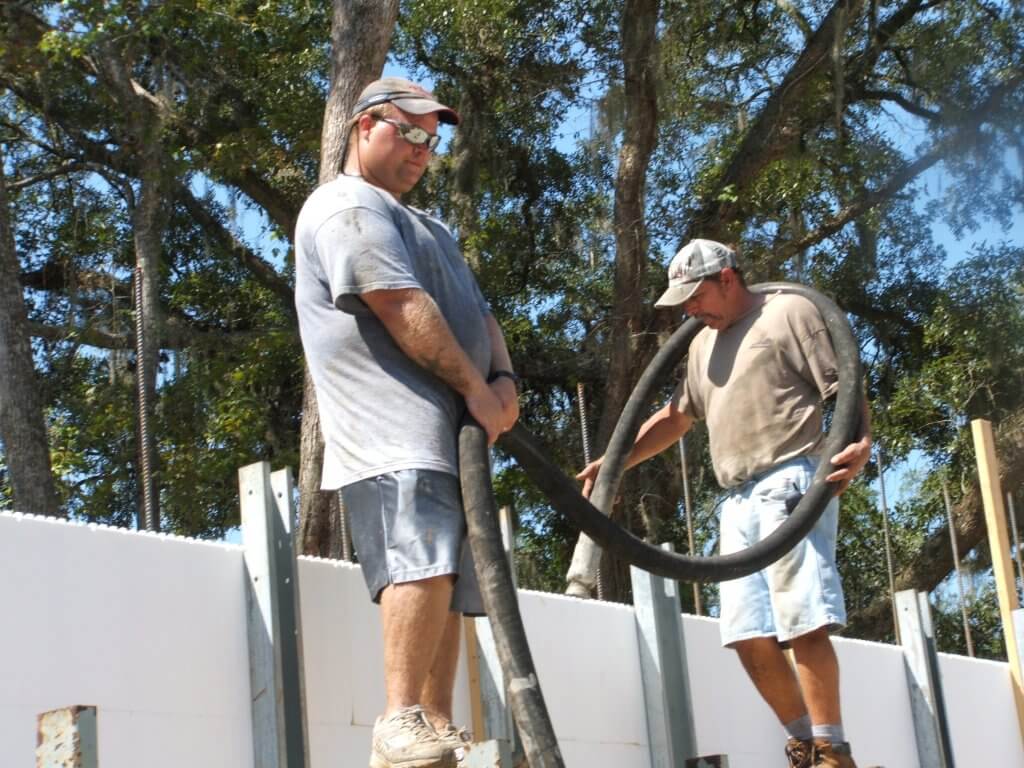
Hot Weather Concreting Tips on Site
Here are a few things you can do on site to ensure an optimal setting time for your concrete mix in hot weather:
- Moisten the subgrade and steel reinforcement prior to the pour
- Ensure you have sufficient hands on deck to perform the pour as quickly as possible
- Consider scheduling the pour for the cooler part of the day
Case Study - Hot Weather Concreting With ICFs
To get some first-hand, practical tips for hot weather concreting with ICFs, we’ve interviewed Marc Stark, of Stark Construction and Supply.
Marc is a Florida-based contractor and so most of his concrete work happens in hot weather. Marc is also an ICF specialist. For residential jobs, Marc typically uses Logix ICFs with a 4” concrete core and typically pumps the concrete with a line pump, using a 2” hose.
On Marc’s projects, pouring concrete during the night is generally impossible, as most concrete plants serve large aggregate slab jobs at that time. So, Marc gets his concrete in the morning, when the temperatures are just starting to rise. This means that Marc must do his best to get the setting time right — not too long, not too short.
For most of his ICF jobs, Marc uses the standard, 3,000 PSI mix and he tends to add slag or fly ash to his concrete mix – he finds that more compatible with the 2” hose he uses.
Marc isn’t a fan of admixtures that decelerate curing, he feels plasticizers can cause increased form pressure. Instead, Marc orders the concrete at a 6-inch slump, then might “soup it up” on site, as needed, to about a 7 inch slump.
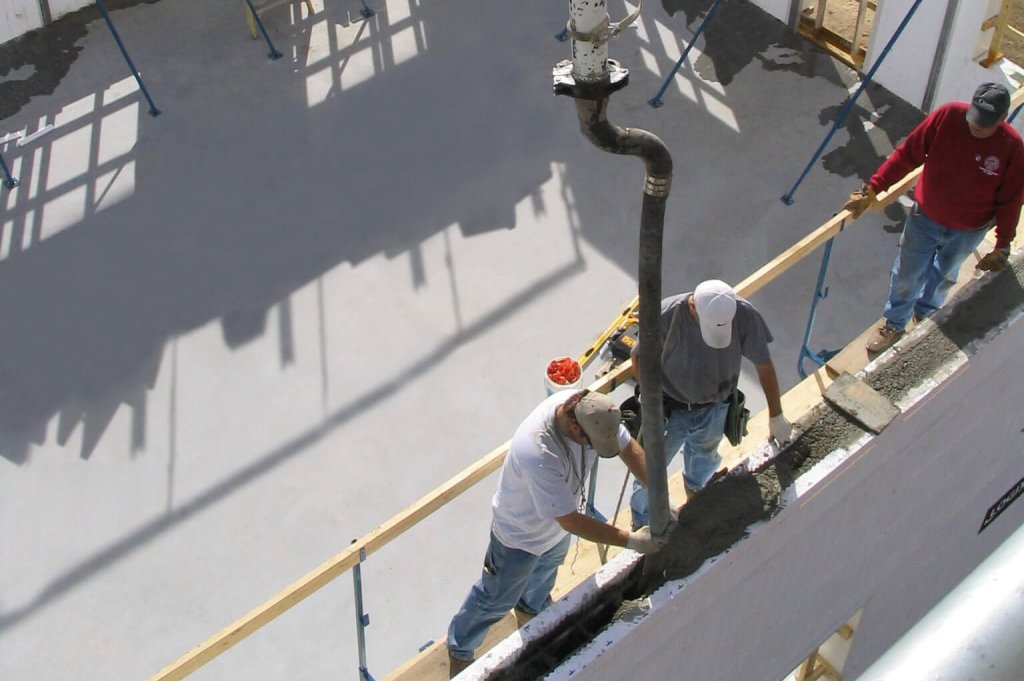
Before the pour, Marc makes sure that all the embedments are set and the walls are plumbed – this allows the pour to go as quickly as possible.
He typically pours his ICF walls in 4-foot lifts, then is typically back around no more than one hour later to for the next lift. He finds the hot temperatures can induce a 1-hour setting time, which actually synch’s up well with Marc’s typical 1 hour time interval between lifts.
At the second-last lift (with 4 inches of the wall’s height remaining), Marc vibrates the poured concrete fully before placing the final 4 inches. This vibrating takes some extra time, but ensures that the final lift is poured quickly and with a clean finish at the top.
And once the pour is complete, because the ICFs are insulated, the tops of the wall can remain untreated, without any insulation layers placed for supplemental heat protection.
Don't miss a thing!
Subscribe for the latest in the ICF world, exclusive content, insider industry news and limited edition webcasts.
Wrapping It Up
Hot weather ICF concreting demands precautions just as cold weather pours do.
However, you can minimize the adverse effects of hot weather on the concrete’s setting time.
Above, we’ve explained best practices for ordering the concrete from the plant and pouring it, when the ambient temperature is over 80°F.
And, as you’ve seen from Marc’s example, with ICFs you can make certain strategic adjustments to your pouring strategy to offset the effects of the higher ambient temperature.
